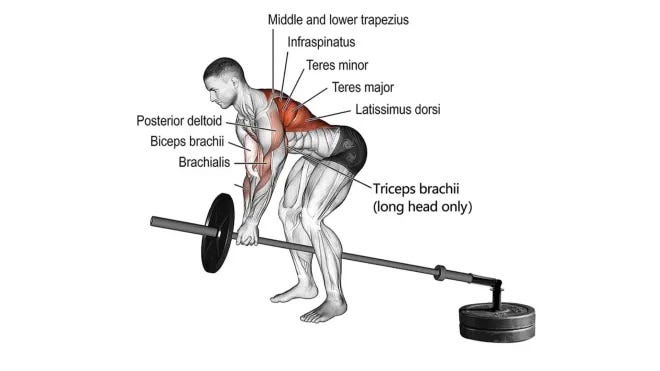Chest Supported T-Bar Row Alternatives
The chest-supported T-bar row is popular among fitness enthusiasts for building a strong, well-defined back. However, not everyone has access to a T-bar row machine or finds the exercise comfortable or suitable for their fitness level.
Luckily, several practical alternatives can help you achieve similar results.
You can perform these back exercises using dumbbells, cables, barbells, gym machines, or even your own body weight.
This blog will explore the best chest-supported T-bar row alternatives, their benefits, and how to perform them with proper form.
Try Our FREE Workout Planner to generate your customized workout plans
1. Chest Supported Barbell Row
A chest-supported barbell row is an effective variation. As the name suggests, it’s a row where your chest is supported.
By leaning into a bench with your upper torso, you’re removing the need for your back to stabilize the movement. These barbell back exercises will help you build your middle back strength.
You can also try Dumbbell Chest-Supported Row.
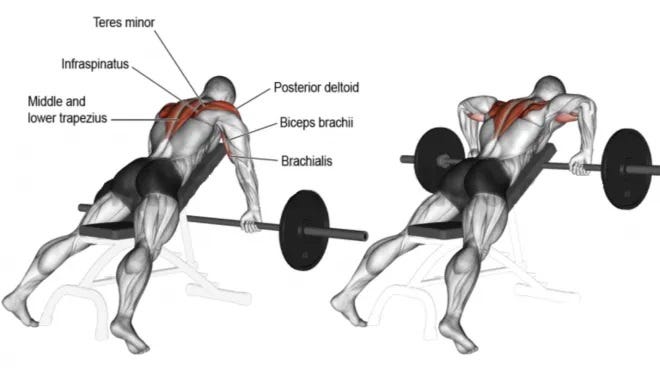
2. Bent Over Barbell Rows
Bent-over barbell rows are a powerhouse exercise for strengthening the upper back and adding significant muscle mass to the region. The angle of your pull determines which muscles are targeted:
- Pulling the bar higher toward the chest engages the upper latissimus dorsi and trapezius.
- Pulling the bar along a lower trajectory to touch the abdomen targets the lower lats.
This versatility makes bent-over rows an essential addition to any back workout routine.
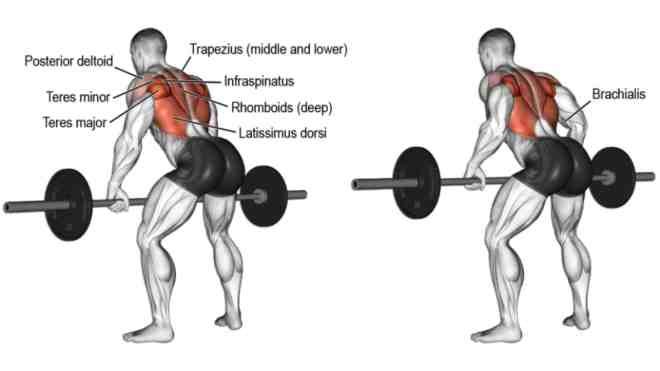
3. Seated Cable Rows
Seated cable rows are excellent for building middle back muscles and engaging the lower lats.
This exercise can be performed using a wide or narrow grip, allowing for versatility in muscle targeting.
It requires a cable rowing machine equipped with separate handles. By maintaining proper form, seated cable rows effectively isolate the back muscles, making them a staple for developing a strong, well-defined back.
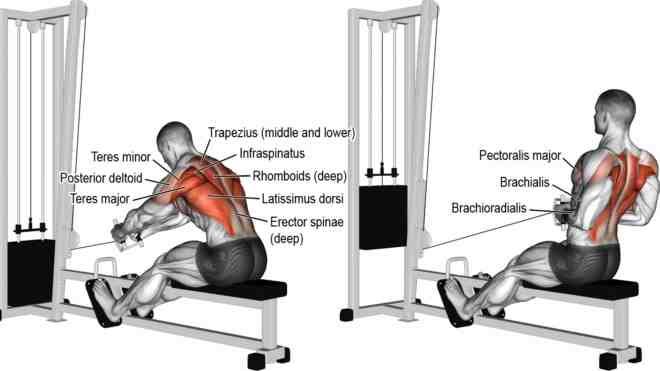
For Free Online Tools, try Our New Tools Website brainy tools hub
4. One Arm Dumbbell Rows
One-arm dumbbell Rows are a highly effective alternative to chest-supported rows, offering the full range of motion needed to build the latissimus dorsi.
This exercise independently targets each side of the back, providing better muscle isolation and a longer range of motion. One-arm dumbbell rows help build a bigger and stronger back and improve posture.
Their simplicity and effectiveness make them a valuable addition to any workout regimen.
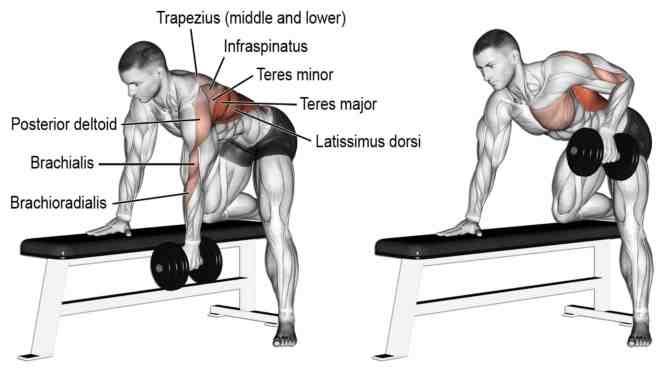
5. T Bar Rows
T bar rows are a power exercise to build middle back muscles. Check the correct execution technique and blast your back muscles. It also works on the outer lats when done with a narrower grip.
T-bar rows are done on a machine or by placing a barbell in the corner. They are tough exercises, but building a strong back is a must to develop a quality physique, stay injury-free, and remain pain-free for life.
